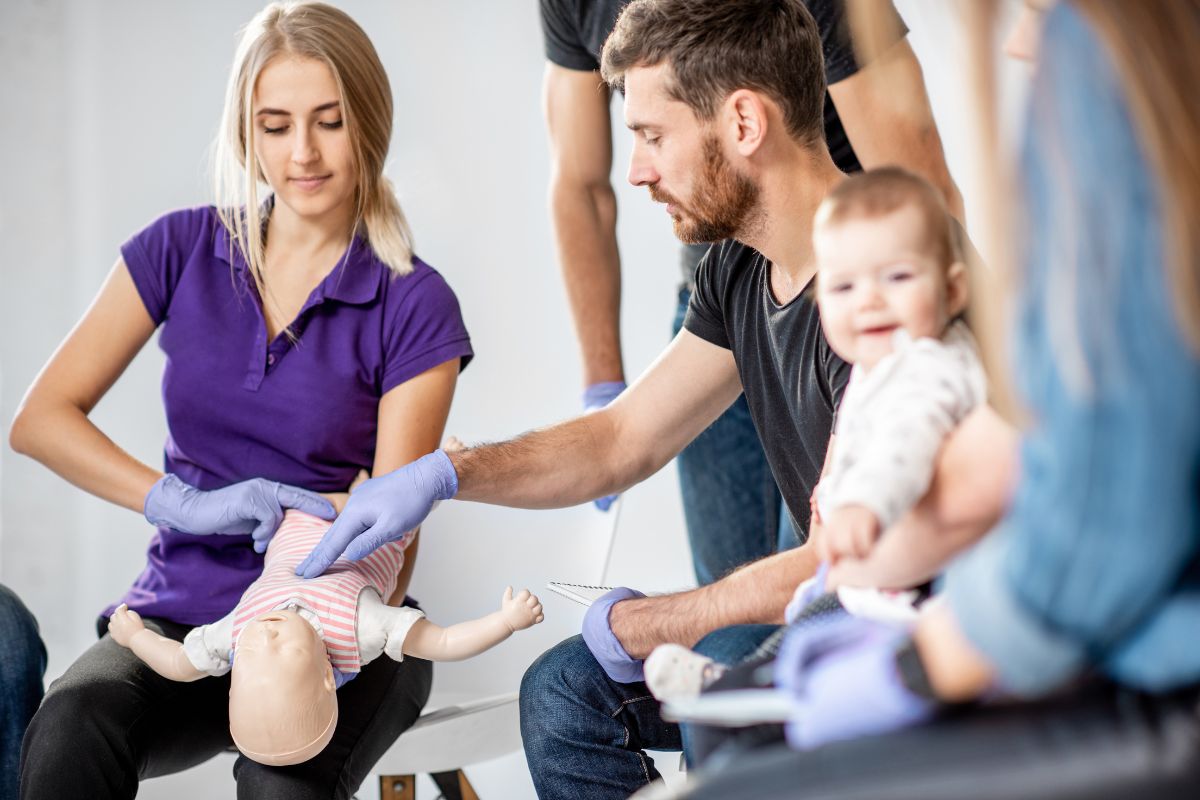When we think of the health and well-being of our children, it’s natural for us to take extra measures to help ensure their safety. But how many of us have taken steps to make sure our kids are prepared in case a medical emergency strikes? Taking proactive steps such as enrolling children in paediatric first aid training classes can provide essential knowledge that may one day be invaluable if an accident or injury occurs. In this blog post, we’ll explore the importance of offering paediatric first aid training courses in schools and examine how parents can give their child a leg up when it comes to basic medical knowledge and understanding.
Overview of the Importance of Paediatric First Aid Training in Schools
Paediatric first aid training is a critical aspect that every school should prioritise. Children are prone to accidents and medical emergencies, which is why it is crucial to equip school staff with the necessary skills to provide prompt first aid care. From playground injuries to allergic reactions, the ability to respond promptly and efficiently to emergencies can make all the difference in saving a child’s life. With paediatric first aid training, school staff can quickly assess the situation, administer first aid, and offer life support measures where necessary. Ensuring that staff are well equipped to handle medical emergencies in schools can significantly reduce the risk of fatalities and injuries. In summary, paediatric first aid training in schools is crucial in promoting safety and ensuring that all children feel safe and well-protected.
Benefits of Teaching Paediatric First Aid in School for both Students and Teachers
Teaching paediatric first aid in schools has numerous benefits for both students and teachers. Firstly, it equips children with essential life-saving skills that they can apply in emergency situations, not just in school, but also in their homes and communities. It also helps to reduce incidents of minor injuries in schools, thereby allowing teachers to focus on their primary role of teaching without distractions. Furthermore, incorporating first aid education in the curriculum creates a culture of safety in schools, where students are aware of potential risks and how to manage them. In addition, teachers learn valuable skills that complement their knowledge of child development, making them better equipped to handle medical emergencies in the classroom. This ensures that in the event of an emergency, teachers are equipped to provide immediate aid, which can make all the difference in saving a child’s life. All in all, teaching paediatric first aid in schools is a crucial step towards ensuring the safety and well-being of both students and teachers.
Age-appropriate Ways to Teach Kids About First Aid
Teaching kids about first aid can be an essential step in keeping them safe and able to handle emergencies in a calm and rational manner. When it comes to introducing first aid to children, it’s important to take a gentle approach and use age-appropriate methods. Simple concepts such as knowing how to call for help and what to do in the event of a minor injury can go a long way in teaching children the basics of first aid. Games, role-plays and hands-on activities can also be an engaging way to introduce more complex topics such as handling burns, cuts and bruises. By building their knowledge of first aid in a supportive and safe environment, children will have the confidence and ability to help themselves and others in times of need.
The Different Types of Paediatric First Aid Courses Offered in Schools
As a parent, there is nothing more important than your child’s safety. That’s why it’s essential to be prepared for any emergency situation that may arise, especially when it comes to paediatric first aid. Many schools offer different types of courses for parents, teachers, and caregivers, which can help them be more confident and capable in handling medical emergencies. Some of these courses may cover basic first aid techniques, while others may include topics like CPR, choking, and allergies. With the right training, you can ensure that you are ready to provide immediate assistance and potentially save a child’s life. It’s always better to be prepared than to find yourself in an emergency situation without the necessary knowledge and skills to help.
Tips on How to Make Learning About First Aid Fun and Engaging for all Ages
Learning about first aid is an essential life skill that can be enjoyable for all ages. You can make learning about first aid engaging by using interactive and hands-on activities to teach life-saving skills. For example, pretend play can be a great way to teach children about basic first aid techniques such as treating cuts and scrapes. You can also use role-playing exercises to illustrate responses to different types of emergencies. Incorporating games and competitions is another fun way to make learning about first aid interesting. By doing this, you can make sure that everyone, regardless of their age, has a good time learning about the basics of first aid.
How to Find Local Resources for Further Paediatric First Aid Training
As a parent, having knowledge of paediatric first aid can be a lifesaver in a moment of crisis. However, it’s also important to keep your skills up to date and learn new techniques. Finding local resources for further training shouldn’t be a challenge. Begin by searching for local hospitals or community centres that offer courses on first aid for children. You could also reach out to local paediatricians or paediatric hospitals, as they may have resources on hand or even offer training themselves. Additionally, checking with organizations like the American Red Cross or St John Ambulance can provide further leads on where to find training. With these resources at hand, you can continue to expand your skills and knowledge of paediatric first aid, and protect the little ones in your life.
In conclusion, learning about paediatric first aid is one of those vital life skills that everyone should know. Training our kids on how to administer first aid in an emergency situation cannot be taken lightly. Despite the middle school and high school age groups lacking a formal certification program within their curriculum, there are still several programs available for students and adults of all ages so that they can learn how to respond quickly and appropriately in a medical emergency. The courses offer much more than just training on basic knowledge; they involve strategies on how best to respond, support children and provide appropriate assistance before a trained professional arrives. By providing our children with the right resources and support systems, we can ensure that they have the capacity to protect others from harm if ever called upon to do so.

